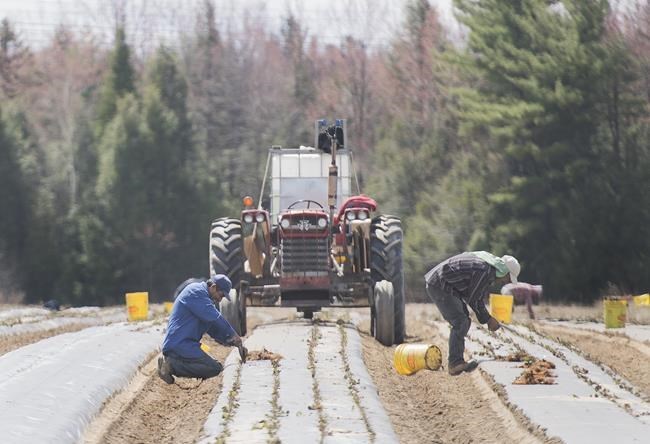OTTAWA — Days before the Liberals release their latest spending plan, the federal government has eased rules on temporary foreign workers in some areas of the economy desperately in need of employees.
The changes announced Monday will allow employers to hire foreign workers for more low-wage jobs, and in areas where the unemployment rate remains high.
Higher-wage, highly skilled workers will also be able to secure three years of employment eligibility instead of two, which the government says would also give them an easier path to permanent residency.
The Canadian Federation of Independent Business welcomed many of the changes as help to address widespread job vacancies, but worried it won't alleviate acute shortages in the service sector.
Employment Minister Carla Qualtrough said the changes provide short-term relief for companies struggling to fill vacancies, including some with dwindling pools of available workers.
She also said the changes are part of an ongoing effort to improve the foreign-worker program without putting downward pressure on wages.
The changes only make it easier for employers to bring in low-wage workers with few rights, instead of addressing the need for decent work and full immigration status, said Syed Hussan, executive director of the Migrant Workers Alliance for Change.
The alliance's concerns reflect broader pressure on the Liberals to address the quality of work in a jobs market that has more than recovered from the blow the COVID-19 pandemic dealt it two years ago.
While Qualtrough wouldn't say what may be coming in the budget, she said she expected the document to address future labour market needs and current issues, including the record-high number of job vacancies.
"The finance minister (Chrystia Freeland) is well aware of the labour shortage situation in our country," Qualtrough said in an interview, "and I'm sure she'll have a lot to say on Thursday about how we're going to make sure we continue to prosper and address our labour shortages."
The country lost three million jobs at the onset of the pandemic over March and April 2020, but has since recovered all that was lost and then some: As of February, the country was 1.9 per cent, or 369,100 jobs, above pre-pandemic levels recorded in February 2020.
The issue now isn't the number of jobs in the country, but the quality of jobs for those employed and those still on the hunt, said Bea Bruske, president of the Canadian Labour Congress.
She said the budget should lay out plans to address the precarity of work, as well as issues with wages and benefits.
"If you're still having to cobble together two or three different really challenging part-time jobs, and you can't count on week to week whether or not you're going to have full-time hours, that's still a huge problem in our society," Bruske said.
The government could address those concerns by ensuring employers pay into the Canada Pension Plan for their gig workers, and ensure those workers can access employment insurance benefits, said economist Jim Stanford, director of the Centre for Future Work.
Moves like that would rein in the growing on-demand model for labour that is degrading the quality of work, Stanford said.
He said the Liberals should invest an expected financial windfall for federal coffers from the economic rebound rather than slash spending.
"This is not a question of where now the government has to shut everything down and get back to basics. Far from it," Stanford said.
"The government has, I think, both the resources and the responsibility to continue to play a very active role in the labour market now with more of a focus on quality rather than quantity."
Qualtrough is still consulting on the future of the EI system with a plan expected this fall, but the government could send some signals Thursday, said Kaylie Tiessen, an economist with Unifor.
She said one option would be to raise benefit rates and make permanent a pandemic-era policy to set a single standard for hours worked to qualify for EI, instead of different regional thresholds.
Tiessen said the government could also further raise the federal minimum wage to improve the quality of jobs, noting a growing body of evidence that raising the pay floor doesn't decrease the number of job opportunities.
"We don't have to go back to just what we had before. We can do something better," she said.
"We saw the essential nature of so much of the low-wage work in our country (in the pandemic) and workers deserve more than what they were getting."
This report by The Canadian Press was first published April 4, 2022.
Jordan Press, The Canadian Press



